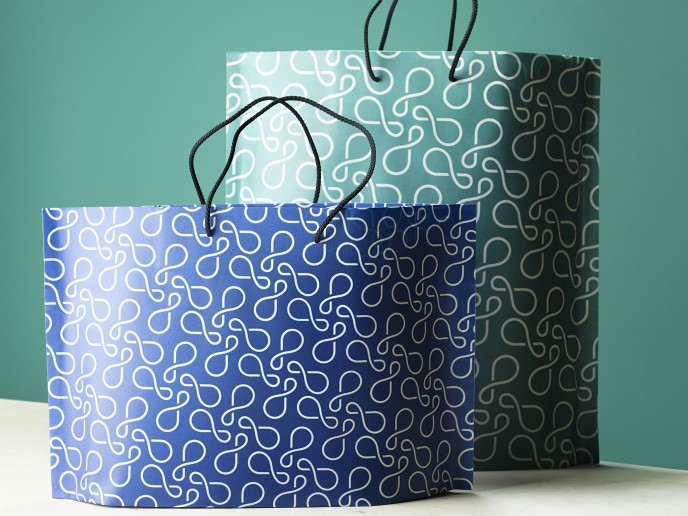Recyclable plastic alternative takes on the packaging market
One of our most serious environmental threats is that the oceans are becoming clogged with plastic. Marine creatures eat it, filling their stomachs with indigestible material, causing death by starvation. Furthermore, plastic toxins pollute the water and enter the human food chain. A major source of marine plastic is product packaging and single-use bags. Since 2014, the EU has been restricting these items(opens in new window) and encouraging alternatives.
Recyclable plastic substitute
In response to this need, the EU-funded PAPTIC(opens in new window) project developed a recyclable material for bags and flexible packaging applications. The product and project names derive from a combination of PAPer and plasTIC. The material is a unique product. It looks and functions like paper, but offers an attractive, high-quality feel like textile. The product emerged from a Finnish technique developed around 2005, called foam forming, that replaces the water in paper with foam. The foam consists of a mixture of water, air and surfactants. Based on the earlier technique, the company developed and patented its innovative material in 2014, which was first commercialised in 2016. The purpose of the EU-funded project was to step up production to industrial scale, via a demonstration plant in Finland.
Best of both
“PAPTIC combines the advantages of paper and plastic, yet eliminates the disadvantages of both,” says Tuomas Mustonen, company founder and project coordinator. PAPTIC is made from renewable, biodegradable raw materials, similar to those used for paper. Consumers can dispose of PAPTIC with their paper recycling. Yet, unlike paper, PAPTIC is durable, and retains tear strength when wet. The product cannot be totally waterproof, as this would conflict with its recyclability, however it does have splash water resistance. So PAPTIC is 4-10 times stronger than standard packaging papers, meaning that the thickness can be reduced by 30-50 %. PAPTIC’s strength also means that carry bags made from it can be reused up to 40 times. A further advantage of the new material is that manufacturers can easily switch to it. PAPTIC is compatible with current paper and plastic printing techniques, so industrial customers need not upgrade their equipment. Yet, PAPTIC is heat-sealable like plastic films. It also has a superior carbon footprint compared to plastic.
Diverse market potential
At first, the company’s main focus was carry bags. This remains important, but the team has also expanded into the fast-growing e-commerce and product packaging markets. Applications where PAPTIC would be very suitable for packaging include toys, electronics and toilet paper wrapping. During the project, researchers optimised the concept via several rounds of trial and error. Setbacks involving partner organisations resulted in the scale-up goals being changed after project start. Nevertheless, the team succeeded in industrialising the product. As planned, the factory is now producing 30 000 t per year via an original equipment manufacture model. “Our next step will be to open our own production facility,” says Mustonen, “which will realise the full potential of the PAPTIC foam technology. It will be the world’s first foam-based production unit for plastics replacement.” Availability of the new material will help reduce the amount of plastic entering the oceans. This will give marine wildlife a fighting chance.







